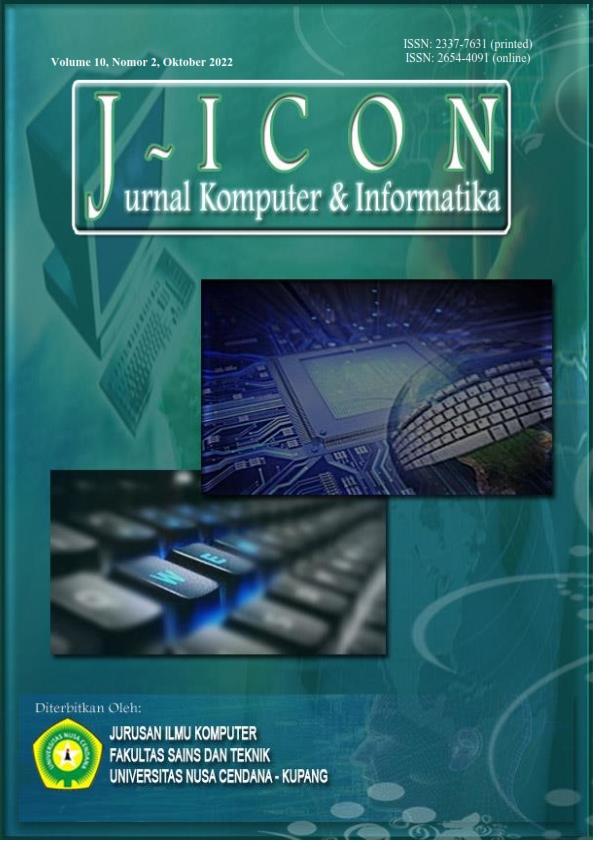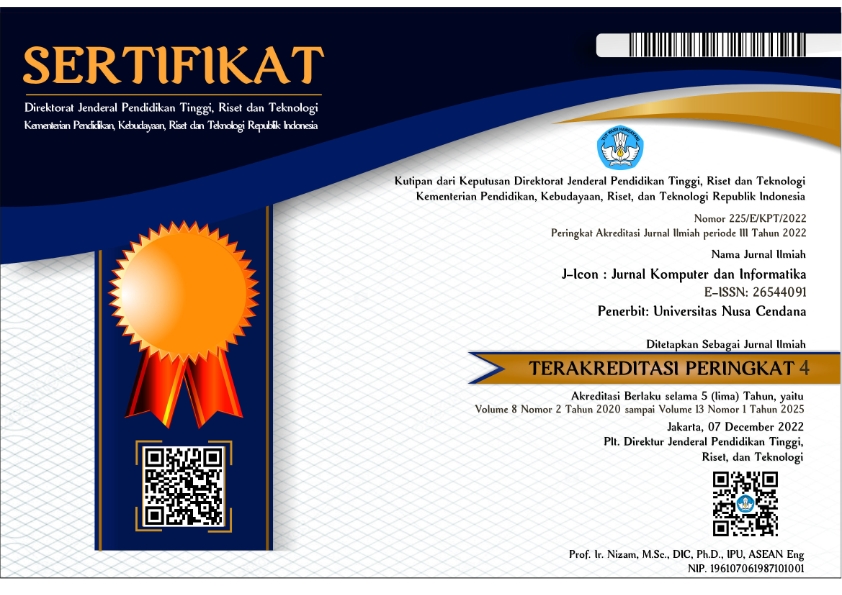MESSAGE SECURITY APPLICATION (.TXT) USING THE TRIPLE DES METHOD AND THE COMBINATION OF LSB AND BLUM-BLUM-SHUB METHODS
Abstract
Security is one of the important aspects of the process of exchanging information (messages). To prevent misuse or attacks by unauthorized parties (attackers) on private messages, the message must be secured. Several methods can be used to secure messages, one of which is by combining the Triple Data Encryption Standard (DES) cryptography method, Blum-Blum Shub (BBS) random number generator, and Least Significant Bit (LSB) steganography. In this study, the Triple DES cryptographic method is used to encrypt messages (embedded-message) with the extension .txt and the BBS random number generator method is used to determine the position of a random pixel to be inserted in the cover-image message. The LSB steganography method is used to perform the embedding process of the encrypted embedded-message at the pixel position resulting from the BBS random number generation process. The test results show that the system can extract embedded messages hidden in a stego-image with 100% accuracy. The maximum number of embedded-message characters that can be used in the test is 150 characters. The test also produces a stego-image that has an average Peak Signal to Noise Ratio (PSNR) value of 88.61, which means that the resulting stego-image has high quality (no significant quality degradation) and the presence of messages in the stego-image is getting harder to detect (imperceptibility).
Downloads
References
N. F. Johnson and S. Jajodia, “Exploring steganography: Seeing the unseen,” Computer, vol. 31, no. 2, pp. 26–34, 1998.
M. Asad, J. Gilani, and A. Khalid, “An enhanced least significant bit modification technique for audio steganography,” in International Conference on Computer Networks and Information Technology, 2011, pp. 143–147.
E. R. Djuwitaningrum and M. Apriyani, “Teknik Steganografi Pesan Teks Menggunakan Metode Least Significant Bit dan Algoritma Linear Congruential Generator,” JUITA J. Inform., vol. 4, no. 2, pp. 79–85, 2017.
R. Munir, Kriptografi, Edisi Kedua. Bandung: Informatika, 2019.
R. Arifin and L. T. Oktoviana, “Implementasi Kriptografi dan Steganografi menggunakan Algoritma RSA dan metode LSB,” Univ. Malang, 2013.
B. Isnanto and A. A. Alkodri, “Kriptografi DES Dan Steganografi Pada Dokumen Dan Citra Digital Menggunakan Metode LSB,” J. TI Atma Luhur, vol. 1, no. 1, pp. 38–45, 2014.
G. W. Bhaudhayana and I. M. Widiartha, “Implementasi algoritma kriptografi aes 256 dan metode steganografi lsb pada gambar bitmap,” J Ilmu Komput, vol. 8, no. 2, pp. 15–25, 2015.
I. M. Arrijal, R. Efendi, and B. Susilo, “Penerapan Algoritma Kriptografi Kunci Simetris Dengan Modifikasi Vigenere Cipher Dalam Aplikasi Kriptografi Teks,” Pseudocode, vol. 3, no. 1, pp. 69–82, 2016.
A. Rohmanu, “Implementasi kriptografi dan steganografi dengan metode algoritma DES dan metode End Of File,” J. Inform. SIMANTIK, vol. 2, no. 1, pp. 1–11, 2017.
D. Darwis, W. Wamiliana, and A. Junaidi, “Proses Pengamanan Data Menggunakan Kombinasi Metode Kriptografi Data Encryption Standard dan Steganografi End Of File,” in Prosiding Seminar Nasional METODE KUANTITATIF 2017, 2017, vol. 1, no. 1, pp. 228–240.
I. Utomo, W. S. Sari, and C. A. Sari, “Kombinasi Steganografi-Kriptografi Citra Menggunakan LSB Dan DES,” SNATIF, vol. 5, no. 1, 2018.
P. H. Rantelinggi and E. Saputra, “Algoritma Kriptografi Triple Des dan Steganografi LSB sebagai Metode Gabungan dalam Keamanan Data,” J. Teknol. Inf. Dan Ilmu Komput., vol. 7, no. 4, pp. 661–666, 2019.
I. Febriana, “PENERAPAN TEKNIK KRIPTOGRAFI PADA KEAMANAN SMS ANDROID,” JoEICT J. Educ. ICT, vol. 1, no. 1, Art. no. 1, Mar. 2017, doi: 10.29100/.v1i1.103.
A. Cheddad, J. Condell, K. Curran, and P. Mc Kevitt, “Digital image steganography: Survey and analysis of current methods,” Signal Process., vol. 90, no. 3, pp. 727–752, 2010.
Copyright (c) 2022 Derwin R Sina, Guido A Kiu, Bertha S Djahi, Emerensye S Y Pandie

This work is licensed under a Creative Commons Attribution 4.0 International License.
The author submitting the manuscript must understand and agree that if accepted for publication, authors retain copyright and grant the journal right of first publication with the work simultaneously licensed under a Creative Commons Attribution (CC-BY) 4.0 License that allows others to share the work with an acknowledgment of the work’s authorship and initial publication in this journal.
 Derwin R Sina(1)
Derwin R Sina(1)




